Поэтика мифа - [160]
SUMMARY
This book compares the classical forms of myth (origin and ancient myths) and their scientific and artistic interpretations in the 20th century within the framework of modernistic renaissance of myth. Myth as a form of thinking and a product of unconscious poetic imagination is. viewed predominantly in terms of the prehistory of literature. Hence the title of the book. Such correlations as myth and religion, myth and political ideology are only touched upon in passing when dealing with some theories. In accordance with the concept the book is divided into three parts: 1. Modem theories of myth, ritualistic and mythological approach to literature. 2. Classical forms of myth and their projection in narrative folklore. 3. «Mythologism» in 20th century literature.
The first part contains introductory chapters dealing with the mythological theories of the 18th and 19th centuries and «remythologizing» in philosophy and culture studies at the end of the 19th and the beginning of the 20th century, as well as the analysis of ritualism and functionalism, the French sociological school, symbolic theories of myth, analytical psychology, structuralism, «myth-ritual» literary criticism, the controversy of «poetics of myth» in Russian and Soviet science, followed by certain conclusions concerning modem theories of myth. The classical 19th century ethnography regarded myths as a naive attempt to describe the environment, essentually of a pre – or even anti-scientific nature, to satisfy the curiosity of a savage oppressed by the formidable elements and possessing but a meagre experience. New approaches to myth, often one-sided, but sometimes more profound, were outlined at the beginning of the century by Boas, Frazer and Durkheim and finally evolved into the ritualistic functionalism of Mali-novsky, the Levy-Bruhl's theory of prelogical primitive «collective representations», Cassirer's logical symbolism, even psychological «symbolism» of Jung and much later the structural analysis of Levi-Strauss. The positive contribution of the new ethnology is manifold. First, myths of primitive peoples are interwoven with magic and ritual, they function to maintain the natural and social order and social control; secondly, mythological thinking is peculiar in its logic and psychology; thirdly, myths are the most ancient form of thinking, a unique symbolic language, man's instrument of shaping, classifying and interpreting the surrounding world, society and himself; and, forthly, peculiar features of mythological thinking can be found in other products of man's imagination of ancient times and other historical periods. Myth as a total and dominant method of thinking is thus characteristic of archaic cultures, but may be present as a certain factor in various other cultures and especially in literature and art, which owe much to myth and share many specific features (raetaphorism, etc.). These new and positive ideas are, however, practically inseparable from a number of extreme and contradictory exaggerations. They tend to deny the cognitive aspect and disregard the historical context or, on the contrary, to overintellectualize myths and underestimate their pragmatic sociological function.
The discoveries of Frazer and Ithe Cambridge group (objectively supported by Malinovsky's achievements) were extensively made use of by culture historians and the ritualistic mythological literary criticism, but lacked the proof of the ritual priority over myth (myth-ritual unity is semantic and not genetic, cf. works of Stanner, Levi-Strauss, Turner and others). They also misplaced the accents in the correlation of mythical temporal paradigms of «primeval times» and «cyclic renaissance». The ritualism facilitated the discovery of the cyclic model of the mythological idea of time (this cyclic notion was essentially adopted by the modernistic novel). But there is another more archaic and fundamental model of the dichotomy of sacred primeval times of creation and the empirical time. The world in the myth is totally determined by these primeval times paradigms and inspired by them. Hence the reactualization of «primeval times» and their life-giving forces in magic rituals. The true emotional charge of rituals is in this reactualizaton, but not in the f'^ct of repetition or their cyclic nature. Some contemporary ethnologists, though only indirectly connected with ritualism, like M. Eliade, for example,, rearranged the accents and myth acquired an absolute ecstatic sentiment of eternal reiteration and purposeful opposition to the historic time. Though Eliade himself has done much to investigate the mythologema of «beginning», influenced by some Nietzsche ideas. This feeling of eternal going round has proved consonant to the modernistic literature. Meanwhile, the absence of historical time in the myth (in contrast to a modernistic novel) is only a by-product of a certain manner of thinking, but not the purpose of mythology and certainly not the expression of the subjective fear of history.

"Лет через десять после начала войны и лет через шесть после ее окончания я встретился с профессиональным военным корреспондентом Тихомировым. Мы спали на соседних нарах в исправительно-трудовом лагере "П". Лагерь был лесоповальный, с лесопильным заводом, но к моменту нашей встречи мы уже оба были "придурками", то есть служащими, а не рабочими, и жили в бараке для административно-технического персонала. В лагере, так же как и на фронте, идеализируется долагерное (довоенное) прошлое и во всяком случае усиливается желание утвердить себя за счет своего прошлого перед соседом.
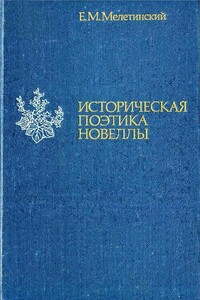
В книге на материале всемирной литературы рассматриваются вопросы происхождения жанровой структуры, формирования классических форм новеллы и ее дальнейших судеб на Западе и на Востоке вплоть до начала XX в. Основные разделы: ранние формы новеллы (новеллистическая сказка и анекдот, восточная новелла, средневековая, европейская новеллы), классическая новелла Ренессанса, романическая новелла XVII—XVIII вв., романтическая новелла XIX в., реалистическая новелла XIX в.

Диссертация американского слависта о комическом в дилогии про НИИЧАВО. Перевод с московского издания 1994 г.
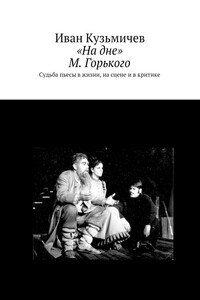
Книга доктора филологических наук профессора И. К. Кузьмичева представляет собой опыт разностороннего изучения знаменитого произведения М. Горького — пьесы «На дне», более ста лет вызывающего споры у нас в стране и за рубежом. Автор стремится проследить судьбу пьесы в жизни, на сцене и в критике на протяжении всей её истории, начиная с 1902 года, а также ответить на вопрос, в чем её актуальность для нашего времени.
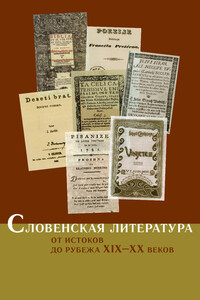
Научное издание, созданное словенскими и российскими авторами, знакомит читателя с историей словенской литературы от зарождения письменности до начала XX в. Это первое в отечественной славистике издание, в котором литература Словении представлена как самостоятельный объект анализа. В книге показан путь развития словенской литературы с учетом ее типологических связей с западноевропейскими и славянскими литературами и культурами, представлены важнейшие этапы литературной эволюции: периоды Реформации, Барокко, Нового времени, раскрыты особенности проявления на словенской почве романтизма, реализма, модерна, натурализма, показана динамика синхронизации словенской литературы с общеевропейским литературным движением.
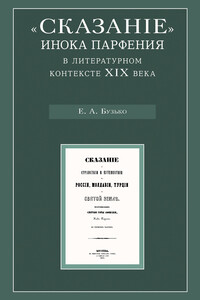
«Сказание» афонского инока Парфения о своих странствиях по Востоку и России оставило глубокий след в русской художественной культуре благодаря не только резко выделявшемуся на общем фоне лексико-семантическому своеобразию повествования, но и облагораживающему воздействию на души читателей, в особенности интеллигенции. Аполлон Григорьев утверждал, что «вся серьезно читающая Русь, от мала до велика, прочла ее, эту гениальную, талантливую и вместе простую книгу, — не мало может быть нравственных переворотов, но, уж, во всяком случае, не мало нравственных потрясений совершила она, эта простая, беспритязательная, вовсе ни на что не бившая исповедь глубокой внутренней жизни».В настоящем исследовании впервые сделана попытка выявить и проанализировать масштаб воздействия, которое оказало «Сказание» на русскую литературу и русскую духовную культуру второй половины XIX в.
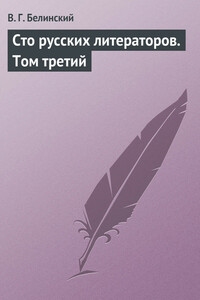
Появлению статьи 1845 г. предшествовала краткая заметка В.Г. Белинского в отделе библиографии кн. 8 «Отечественных записок» о выходе т. III издания. В ней между прочим говорилось: «Какая книга! Толстая, увесистая, с портретами, с картинками, пятнадцать стихотворений, восемь статей в прозе, огромная драма в стихах! О такой книге – или надо говорить все, или не надо ничего говорить». Далее давалась следующая ироническая характеристика тома: «Эта книга так наивно, так добродушно, сама того не зная, выражает собою русскую литературу, впрочем не совсем современную, а особливо русскую книжную торговлю».